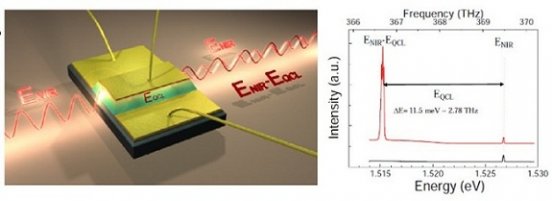
 Autour du thème des TIPE pour les concours 2020
Exposé 1
Exposé 2
Exposé 3
Exposé 4
Autour du thème des TIPE pour les concours 2020
Exposé 1
Exposé 2
Exposé 3
Exposé 4
 Autres années
Autour du thème des TIPE pour les concours 2019 - Transports
Autres années
Autour du thème des TIPE pour les concours 2019 - Transports

 Autour du thème des TIPE pour les concours 2020
Exposé 1
Exposé 2
Exposé 3
Exposé 4
Autour du thème des TIPE pour les concours 2020
Exposé 1
Exposé 2
Exposé 3
Exposé 4
 Autres années
Autour du thème des TIPE pour les concours 2019 - Transports
Autres années
Autour du thème des TIPE pour les concours 2019 - Transports
The determining factor in the efficiency of any nonlinear process is the nonlinear susceptibility of the material to be used for frequency conversion. In the case of a second order process (second harmonic generation or sum/difference generation), the conversion efficiency of converting the fundamental frequency to a generated frequency is proportional to the square of the second order susceptibility, χ(2). Typically these values are small in most bulk materials ( 100pm/V in GaAs) and to attain reasonable conversion efficiencies phase matching is imperative to allow a long interaction length.
The nonlinearities, however, can be enhanced by orders of magnitude if any or all of the interacting beams are resonant with a ‘real’ transition of the material in question. In this work, the “ultra-fast THz spectroscopy” group at LPA (ENS) has demonstrated that efficient frequency mixing can be attained between an optical photon (energy eV) and a terahertz (THz) photon ( meV) within the cavity of a compact and practical THz laser – a quantum cascade laser (QCL). Here the optical transition is resonant with the bandgap, enhancing the susceptibility to 104pm/V, permitting frequency conversion without the considerations of phase matching.
As well as of fundamental interest, this work opens up applications in the domains of all-optical telecommunication where the QCL is used as an optical wavelength shifter or THz detection where the QCL up-converts the THz emission to the optical domain.
Reference :
J. Madéo, et al. “All-optical wavelength shifting in a semiconductor laser using resonant nonlinearities”, Nature Photonics 6, 519-524 (2012).
Contacts :
jerome.tignon@lpa.ens.fr ; sukhdeep.dhillon@lpa.ens.fr
 RECRUTEMENT
RECRUTEMENT ACCES DIRECT
ACCES DIRECT
